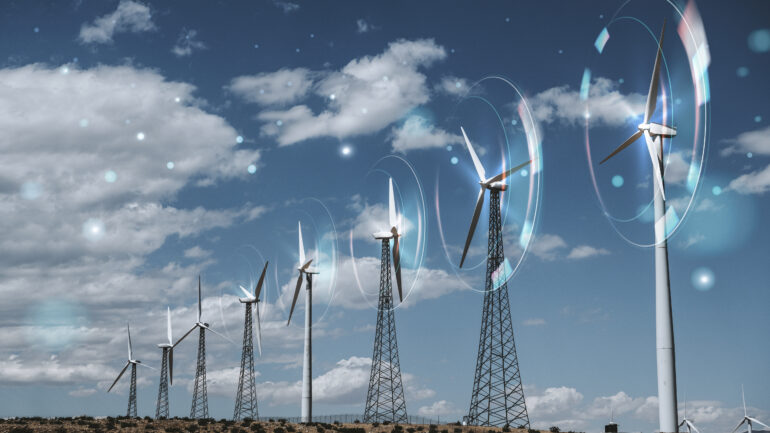Green Energy Transition puts Dr. Copper in the Eye of a Geopolitical Storm

Copper is the new oil—and it’s igniting a global power struggle.
As the green energy race accelerates, a looming copper crunch is redrawing geopolitical lines. With China dominating supply chains and the U.S. eyeing Africa’s copper-rich mines, one metal now holds the key to energy, tech, and global influence. Read why copper is at the heart of the next big global shift.
The scramble of rare earth and vital minerals is driving a new kind of geopolitics where resource is being bartered for security. Close on the heels of the mineral deal between the US and Ukraine, a global shortage of copper, a vital mineral in green energy transition, has created another possible alliance between war-torn DR Congo (DRC) and the United States. Though the US has ample copper reserves, its smelting and refining capacity has declined. China has become the world’s leading supplier of refined copper, commanding a 50 percent market share. This has pushed the red metal into the eye of a geopolitical storm, with the US pushing into Africa where China already has significant mining presence in DRC as part of its minerals for infrastructure deals. India, which is deficient in this vital mineral, is also trying to strike alliances in Africa to access these resources.
‘Doctor Copper’ has long been regarded by experts as an excellent indicator for economies’ health, given its uncanny ability to predict turning points in global demand. It’s widespread use across industries – from manufacturing, housing, electronics, power generation, transmission etc – positions it such that tracking fluctuations in copper prices often tells us more about economic activity than many other direct indicators
Global copper demand outpaces supply
Under the most optimistic mining forecasts, there will be a significant copper supply shortfall by the end of this decade. The International Energy Agency sees a potential gap of 4.5 million metric tons by 2030 in its most aggressive clean energy scenario. Even the base case shows the world will need 80% more copper by 2040 just to meet the current energy policy targets.
China Dominates Copper Supply Chain
When it comes to refined copper production, China is by far the winner. In 2024, its refined copper production totaled 12 million metric tons, representing more than 44 percent of global refined copper production and six times the production of Chile, the next-top refinery producer. China also holds the world’s highest copper reserves at 190 million MT.
A recent analysis on the global copper market share revealed that China and countries it has major copper mining projects (Zambia, DRC, Indonesia and Iran) control 53.1% of the world’s copper, while the U.S. and its allies only controls 15.6%. China is positioning itself as the epicenter of copper value chains through vast smelting operations, aggressive overseas mine investments, and tight control of refining infrastructure.
DR Congo’s Copper Edge
DRC is exceptionally rich in mineral resources, particularly copper, cobalt, and diamonds. The country is a global leader in cobalt production, supplying over 70% of the world’s supply, and is also a major producer of copper and industrial diamonds. Other significant minerals include gold, tin, tantalum, lithium, and uranium. Last year, the country produced 3.3 million metric tons of copper, accounting for more than 11 percent of global copper output. The DRC has increased its copper production rapidly in recent years, and its 2024 output marked a significant rise from the 2.93 million metric tons of copper produced the previous year.
A looming global copper shortage could stall the world’s transition to clean energy and digital technologies unless smarter trade and investment strategies are adopted, the UN’s trade and development body, UNCTAD, has warned. In its latest Global Trade Update, released earlier this month, UNCTAD describes copper as “the new strategic raw material” at the heart of the rapidly electrifying and digitising global economy.
But with demand set to rise more than 40 per cent by 2040, copper supply is under severe strain – posing a critical bottleneck for technologies ranging from electric vehicles and solar panels to AI infrastructure and smart grids. Over half of global copper reserves are located in just five countries – Chile, Australia, Peru, the Democratic Republic of the Congo and the Russian Federation.
For telecommunication to electric vehicles, Copper is a vital material across industry vertical due to its excellent electrical and thermal conductivity, as well as its resistance to corrosion. It is a key component in printed circuit boards (PCBs) found in computers, smartphones, and other devices, and is also used in connectors and switches for reliable connections.
Copper infrastructure supports fiber optic cables and networking equipment like routers and switches. The renewable energy sector relies on copper for solar panels, where it is used in photovoltaic cells and wiring, as well as in wind turbines for electrical connections and generators. In transportation, electric vehicles utilize copper in batteries, motors, and wiring, while rail systems incorporate it in signalling and power systems.
More than just metal
“Copper is no longer just a commodity,” said Luz María de la Mora, Director of the International Trade and Commodities Division at UNCTAD. Valued for its high conductivity and durability, copper is essential to power systems and clean energy technologies. It runs through homes, cars, data centres and renewable infrastructure.
Yet developing new mines is a slow and expensive process, and fraught with environmental risks – often taking up to 25 years from discovery to operation. Meeting projected demand by 2030 could require $250 billion in investment and at least 80 new mining projects, according to UNCTAD estimates. Declining ore grades, rising geopolitical risks, and long mine development timelines—now up to 25 years—have exacerbated the crisis. Closing the supply gap, according to UNCTAD, will require faster permitting, better technology, stronger partnerships and more diversified trade routes.


